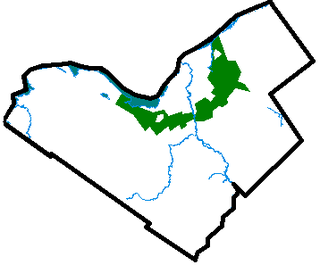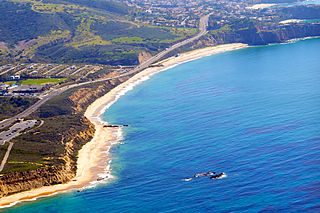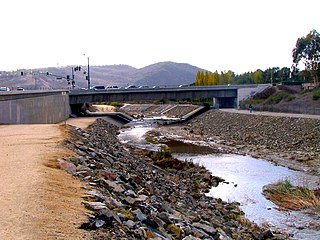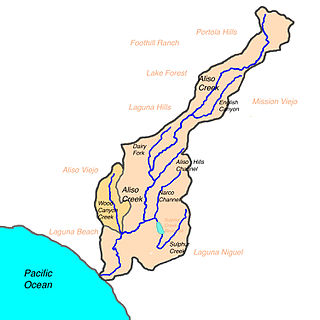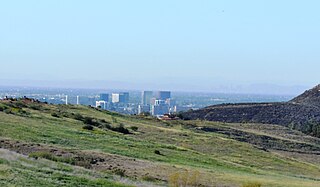This article may require cleanup to meet Wikipedia's quality standards. The specific problem is: There are entire sections that are either uncited, or are direct quotes from books. Reliance on quoted text is a form of a WP:Copyvio or WP:Close paraphrasing (December 2016) (Learn how and when to remove this template message) |
This article needs additional citations for verification .(December 2016) (Learn how and when to remove this template message) |
| Laguna Coast Wilderness Park | |
|---|---|
 Boomer Ridge Trail, Laguna Coast Wilderness Park | |
| Location | San Joaquin Hills, Orange County, California |
| Nearest city | Laguna Beach, California |
| Coordinates | 33°34′27″N117°46′33″W / 33.5743°N 117.7757°W Coordinates: 33°34′27″N117°46′33″W / 33.5743°N 117.7757°W |
| Area | 7,000 acres (2,800 ha) |
| Governing body | Orange County Parks |
| www | |
Laguna Coast Wilderness Park [1] is a 7,000-acre (2,800 ha) wilderness area in the San Joaquin Hills surrounding Laguna Beach, California. This park features coastal canyons, ridgeline views and the only natural lakes in Orange County, California. Trails are maintained for hiking and mountain biking with a wide range of difficulty, from beginner to expert. Most trails gain in height, reaching a maximum of 1,000 feet (300 m) in elevation. Several trails lead to downtown Laguna Beach.

The San Joaquin Hills are a low mountain range of the Peninsular Ranges System, located in coastal Orange County, California.

Laguna Beach is a seaside resort city located in southern Orange County, California, in the United States. It is known for a mild year-round climate, scenic coves, environmental preservation, and an artist community. The population in the 2010 census was 22,723. As per population estimate in July 2017 the total population of Laguna Beach city was 23,174.

Orange County is located in the Los Angeles metropolitan area in the U.S. state of California. As of the 2010 census, the population was 3,010,232, making it the third-most populous county in California, the sixth-most populous in the United States, and more populous than 21 U.S. states. Its county seat is Santa Ana. It is the second most densely populated county in the state, behind San Francisco County. The county's four largest cities by population, Anaheim, Santa Ana, Irvine, and Huntington Beach, each have a population exceeding 200,000. Several of Orange County's cities are on the Pacific Ocean western coast, including Huntington Beach, Newport Beach, Laguna Beach, Dana Point, and San Clemente.
Contents
Laguna Coast Wilderness Park has some of the last remaining undeveloped coastal canyons in Southern California. The park is dominated by coastal sage scrub, cactus and native grasses. Over 40 endangered and sensitive species call Laguna Coast home including California gnatcatcher, cactus wren and the endemic Dudleya stolonifera . Both Laguna Coast, Aliso and Wood Canyons Wilderness Park are also home to mule deer, long-tailed weasel, healthy bobcat populations, and raptors like red-tailed hawk and the ground-nesting northern harrier.

Coastal sage scrub, also known as coastal scrub, CSS, or soft chaparral, is a low scrubland plant community of the California coastal sage and chaparral subecoregion, found in coastal California and northwestern coastal Baja California. It is within the California chaparral and woodlands ecoregion, of the Mediterranean forests, woodlands, and scrub biome.

The California gnatcatcher is a small 10.8 cm (4.3 in) long insectivorous bird which frequents dense coastal sage scrub growth. This species was recently split from the similar black-tailed gnatcatcher of the Sonoran and Chihuahuan deserts. This bird is often solitary, but joins with other birds in winter flocks.

The cactus wren is a species of wren that is endemic to parts of the southwestern United States, as well as northern and central Mexico. There are eight generally recognized subspecies, and the nominate species has a brown crown, with notable white eyebrows that stretch to the nape of the neck. The wings and feathers are brown, but are marked with black and white spots. The tail, as well as certain flight feathers, are also alternatively barred in black and white. The chest is whiter, while the underparts are cinnamon-buff colored. Its song is harsh and raspy and has been described by ornitholgists like a car engine that will not start.


